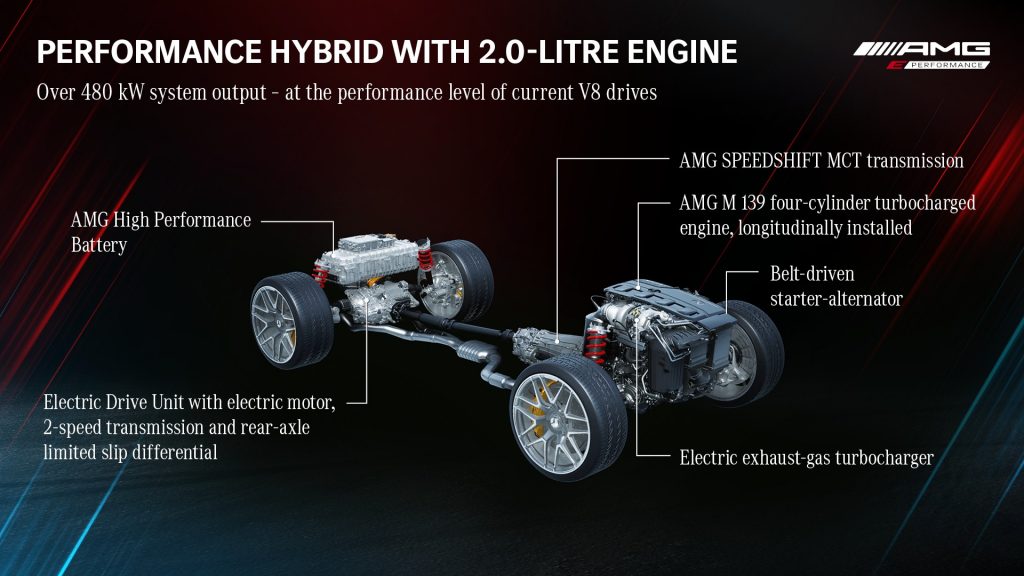- AMG CLE 63 is expected to adopt 577 hp V8 instead of C 63 sedan’s more powerful PHEV inline four.
- Sales of C 63 have reportedly been much slower since it junked its V8 for four-cylinder power.
- Porsche also recently replaced a V6 with a V8 in the Cayenne.
Though Mercedes-AMG has yet to confirm it, evidence is mounting that the upcoming CLE 63 coupe and convertible will be fitted with an engine that makes almost 100 fewer ponies than the one in the C 63 sedan.
var adpushup = window.adpushup = window.adpushup || {que:[]};
adpushup.que.push(function() {
if (adpushup.config.platform !== “DESKTOP”){
adpushup.triggerAd(“4d84e4c9-9937-4f84-82c0-c94544ee6f2a”);
}
else{
adpushup.triggerAd(“6a782b01-facb-45f3-a88f-ddf1b1f97657”);
} });
It sounds entirely counter-intuitive, but it’ll have would-be C 63 owners begging AMG to drop the same powertrain into the sedan, and if we were in the market for a BMW M3-segment car, we’d be joining them in calling for it.
Related: Mercedes-AMG CLE 63 Will Get A V8 Because Nobody Wants The C63’s PHEV Four-Banger
The switcheroo, according to last week’s Autocar report, means AMG has dropped plans to install the C 63 and GLC 63’s 2.0-liter, four-cylinder PHEV powertrain into the CLE twins. Instead of 671 hp (680 PS) of plug-in power they’ll get a traditional twin-turbo, 4.0-liter V8 making just 577 hp (585 PS).
var adpushup = window.adpushup = window.adpushup || {que:[]};
adpushup.que.push(function() {
if (adpushup.config.platform !== “DESKTOP”){
adpushup.triggerAd(“5646c171-cb6e-4e2c-8440-49013ca72758”);
}
else{
adpushup.triggerAd(“e7c4c913-3924-4b2d-9279-6c00984dd130”);
} });
They’ll be much slower and thirstier than they could have been, as a result, but possibly lighter and almost certainly far more fun overall, because there’s so much more to a really great sporty car than being able to go fast.
Everywhere across the car market, cars are being homogenized. It started with the mass-market cars, which have almost all adopted the formula of 2.0-liter, turbocharged inline four petrol engine because they’re efficient, clean, torquey and compact. Fair enough; these kinds of cars, small SUVs and crossovers, are designed to be functional first, and fun, a distant fourth or fifth.
But luxury and performance cars, whether they’re outright sports cars like the Porsche 718, or speedy, premium sedans like the C 63, are emotional purchases. They are intended to excite, and one of the ways they do that is by having more power and performance than can anyone can reasonably justify. Some are already so fast that, depending where you live, you can only ever experience their maximum acceleration for a few seconds at a time. The last thing they need is even more performance.
What they do need to do is make us feel special even when we’re not traveling at Mach III. They need to make a wicked grin cross our faces when we push the starter button and the car rocks on its suspension ever so slightly, or when we brush the right pedal a fraction harder to pass another car without really trying.
window._taboola = window._taboola || [];
_taboola.push({
mode: ‘thumbnails-a-mid’,
container: ‘taboola-mid-article’,
placement: ‘Mid Article’,
target_type: ‘mix’
});
window._taboola = window._taboola || [];
_taboola.push({
mode: ‘thumbnails-oc-2×1’,
container: ‘taboola-mid-article-thumbnails-organic’,
placement: ‘Mid Article Thumbnails Organic’,
target_type: ‘mix’
});
It’s the quality of the sound and the quality of the performance that matters, not the quantity. A V8 feels and sounds special and expensive in the way that an inline four almost never does.

Unfortunately, carmakers need to show us that their latest car is better than their last, and it’s harder to measure “feelgood factor” than it is quarter-mile acceleration or lap times. Environmental pressures and the need to create PR-worthy links to motorsport programs and their downsized engines have also conspired to rob us of the last few V8s available.
But maybe automakers are listening. The CLE’s V8 comeback hasn’t yet officially been confirmed, but Rimac has admitted that sales of its Nevera have been slow because buyers want ICE supercars and Porsche has already swapped out the punchy, but bland, V6 in the mid-ranking Cayenne S for a V8.
Yes, it makes a bit more power, but it also uses only fractionally more gas (17 vs 18 mpg; both are terrible), and puts a much bigger grin on the driver’s face, whether he’s just crawling through a parking lot or extracting every last horse on a run through the world’s longest tunnel.
Maybe in 15 years time regulatory (or societal) pressures will mean every car is either an EV or a hyper-efficient four-cylinder machine, but let’s not be in a rush to get there. Like I said, there’s more to a great fast car than straight-line speed.
var adpushup = window.adpushup = window.adpushup || {que:[]};
adpushup.que.push(function() {
if (adpushup.config.platform !== “DESKTOP”){
adpushup.triggerAd(“e96f0476-8b1d-4bb8-b64c-33f9656987b2”);
}
else{
adpushup.triggerAd(“0f9edca9-aa84-4c07-8987-4cad23928c2d”);
} });
#Opinion #V8s #AMG #Admits #Sporty #Cars #Appeal #Speed


